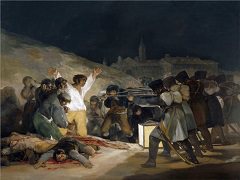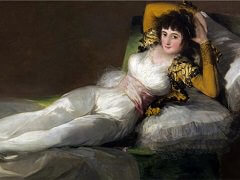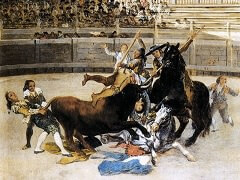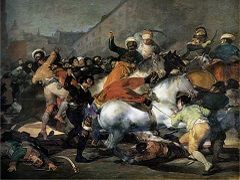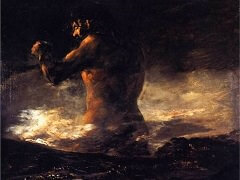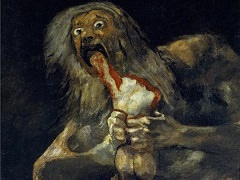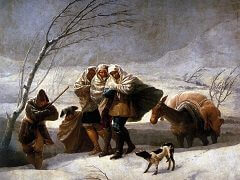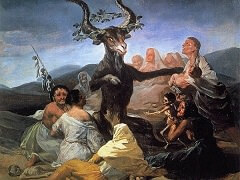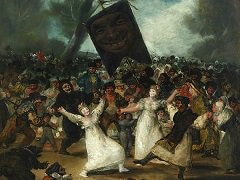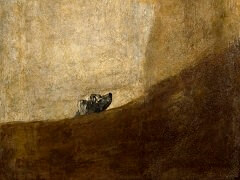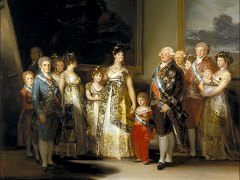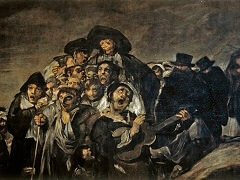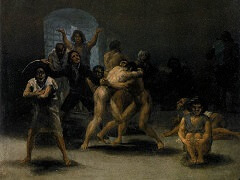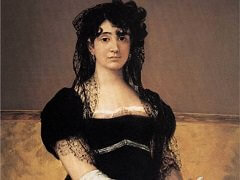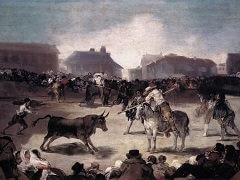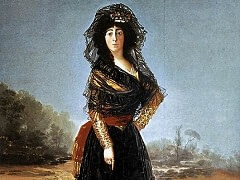Charles IV on Horseback, 1799 by Francisco Goya
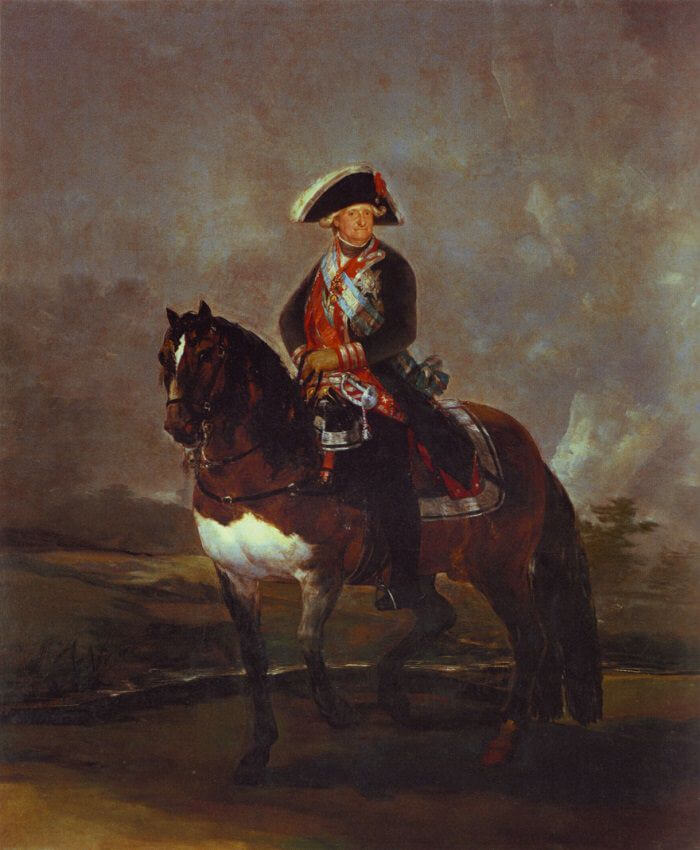
The death of Charles III in 1788, a few months before the outbreak of the French Revolution, brought to an end the period of comparative prosperity and enlightenment in Spain in which Goya had slowly reached maturity. The rule of reaction and political and social corruption that followed - stimulated by events in France - under the weak and foolish Charles IV and his clever, unscrupulous Queen, Maria Luisa, was to end in the Napoleonic invasion of Spain.
Under the new regime Goya reached the height of his career as the most fashionable and successful artist in Spain. The new King raised him to the rank of Court Painter in 1789 and in 1792 he felt his position in the Academy assured enough to submit a report on the study of art, recommending the setting aside of the form of teaching established by Mengs, which had prevailed there. At the death of Francisco Bayeu in 1795, Goya succeeded his former teacher as Director of Painting in the Academy (but resigned for reasons of health two years later), and in 1799 was appointed First Court Painter. Goya evidently welcomed official honours and worldly success with almost naive enthusiasm. 'The King and Queen are mad about your friend Goya', he wrote, announcing this last honour to his friend in Saragossa. Yet the record that he has left in paint of some of his patrons - including members of the royal family - is ruthlessly critical.

